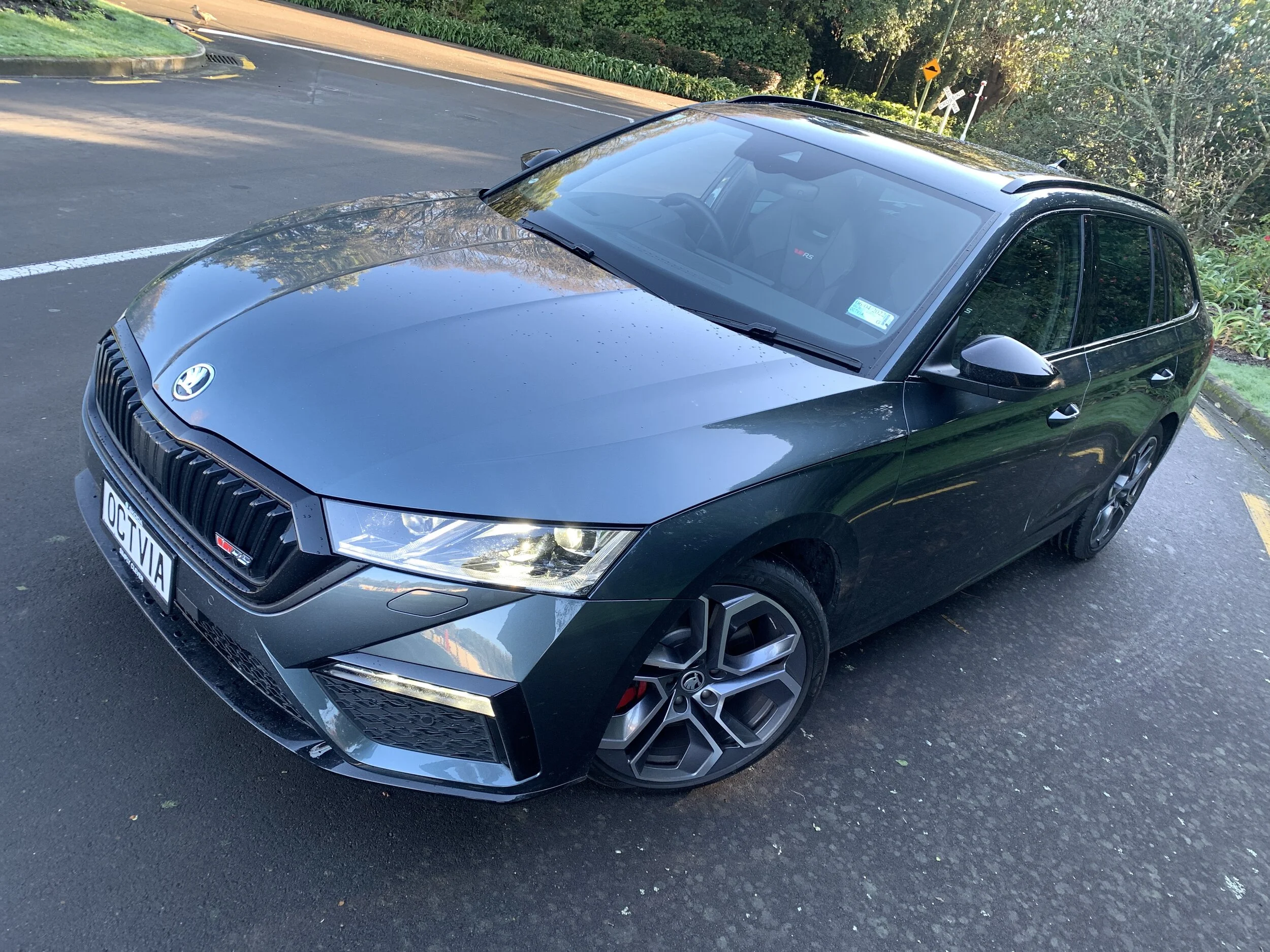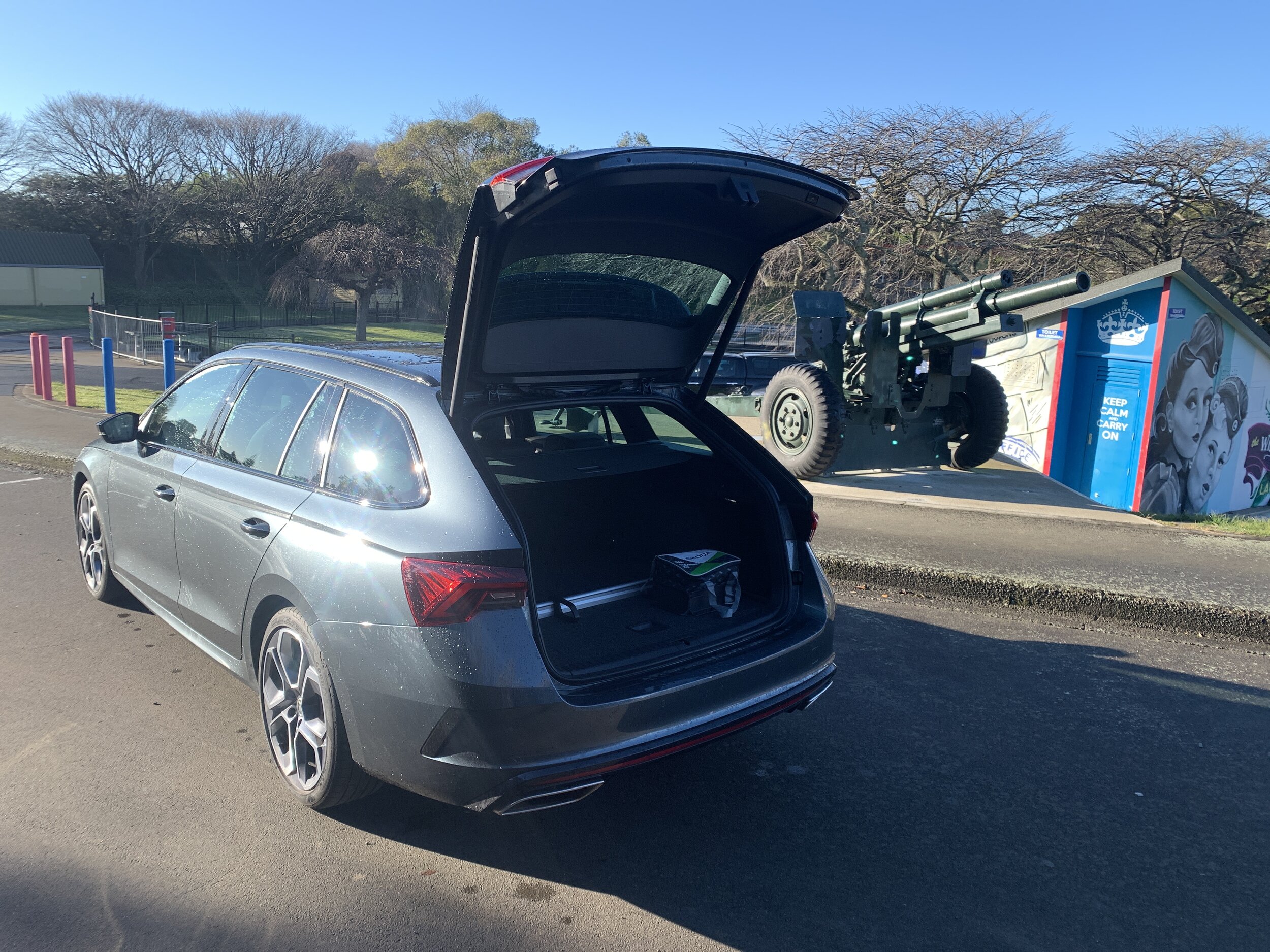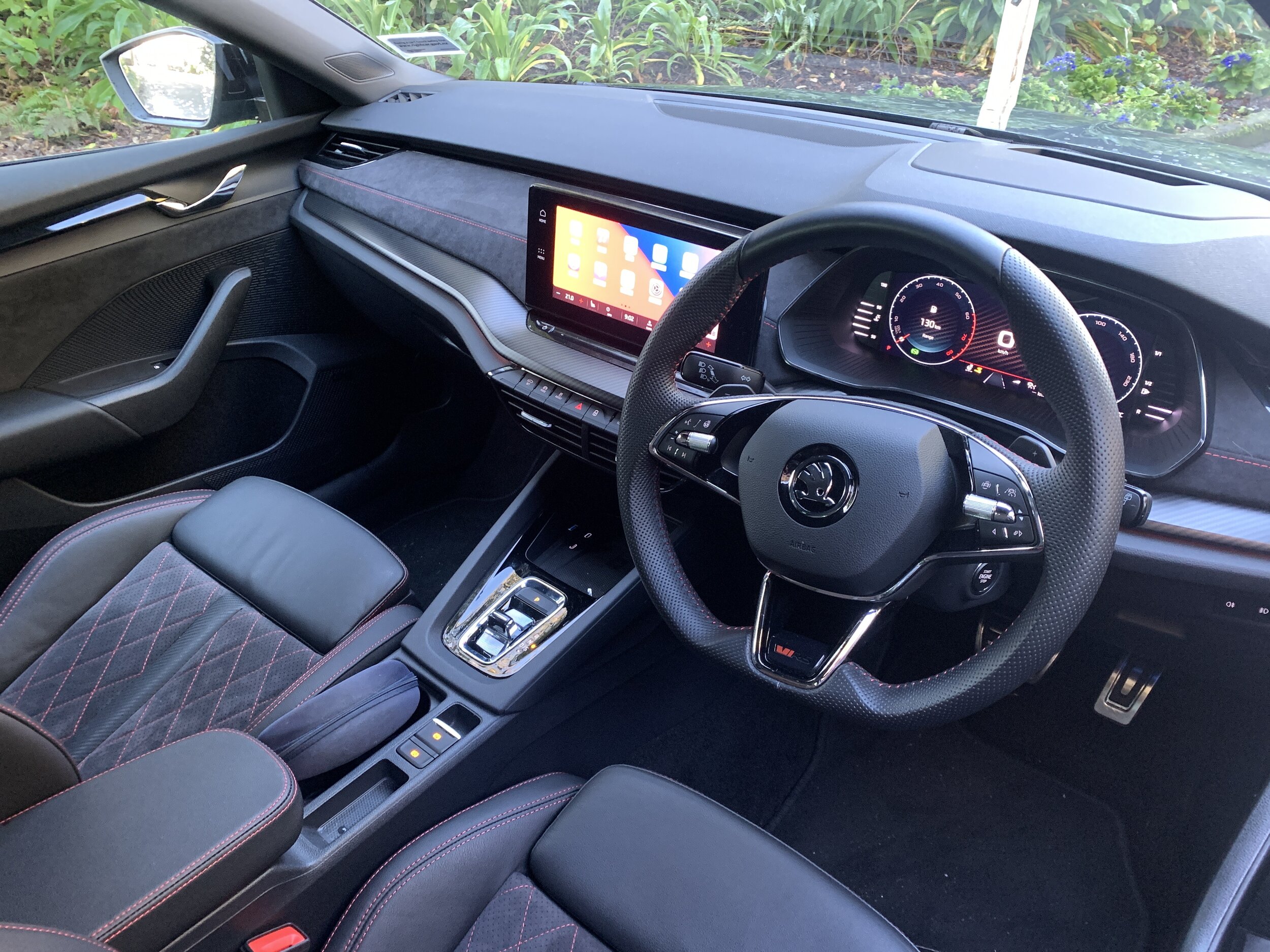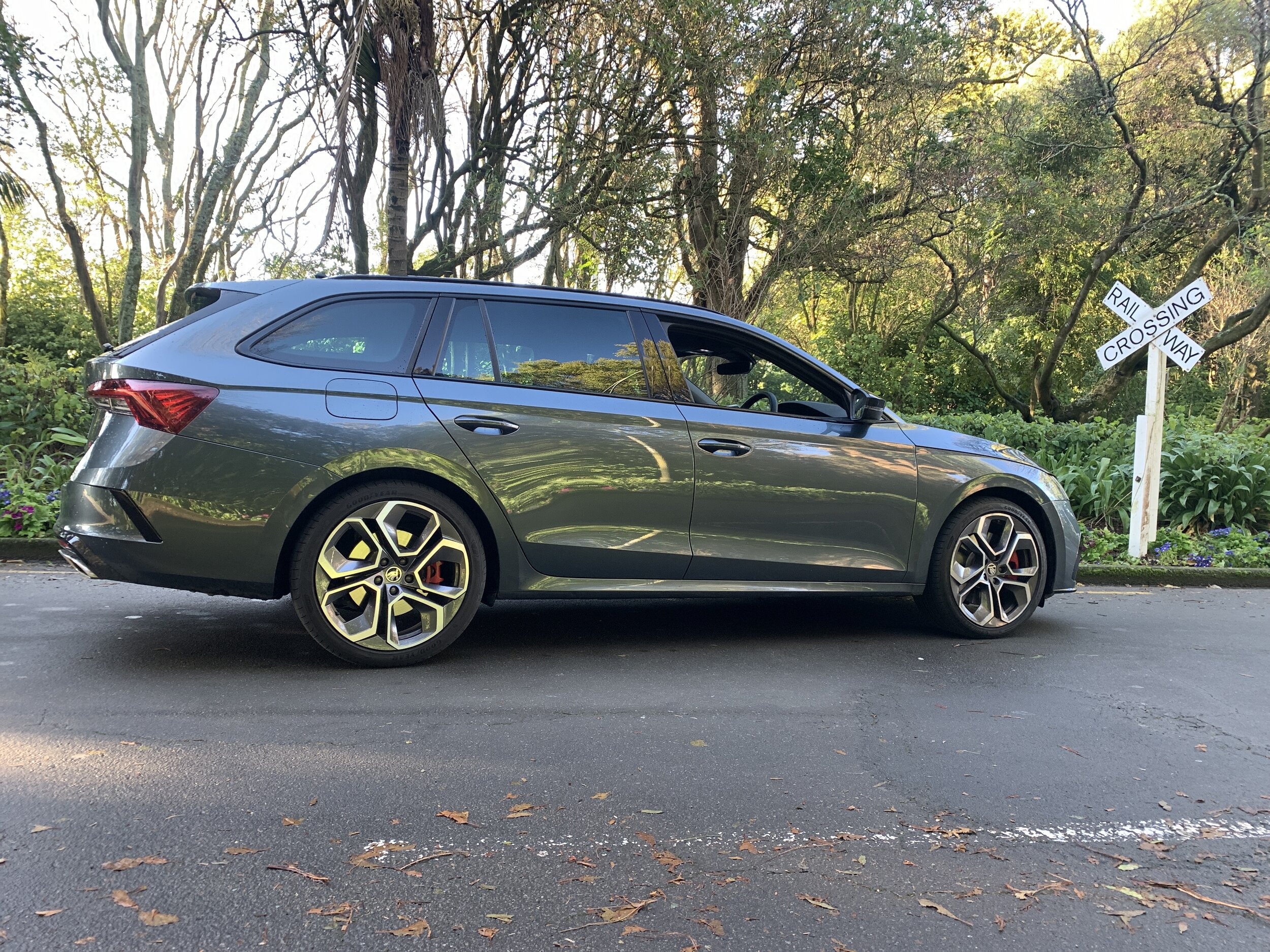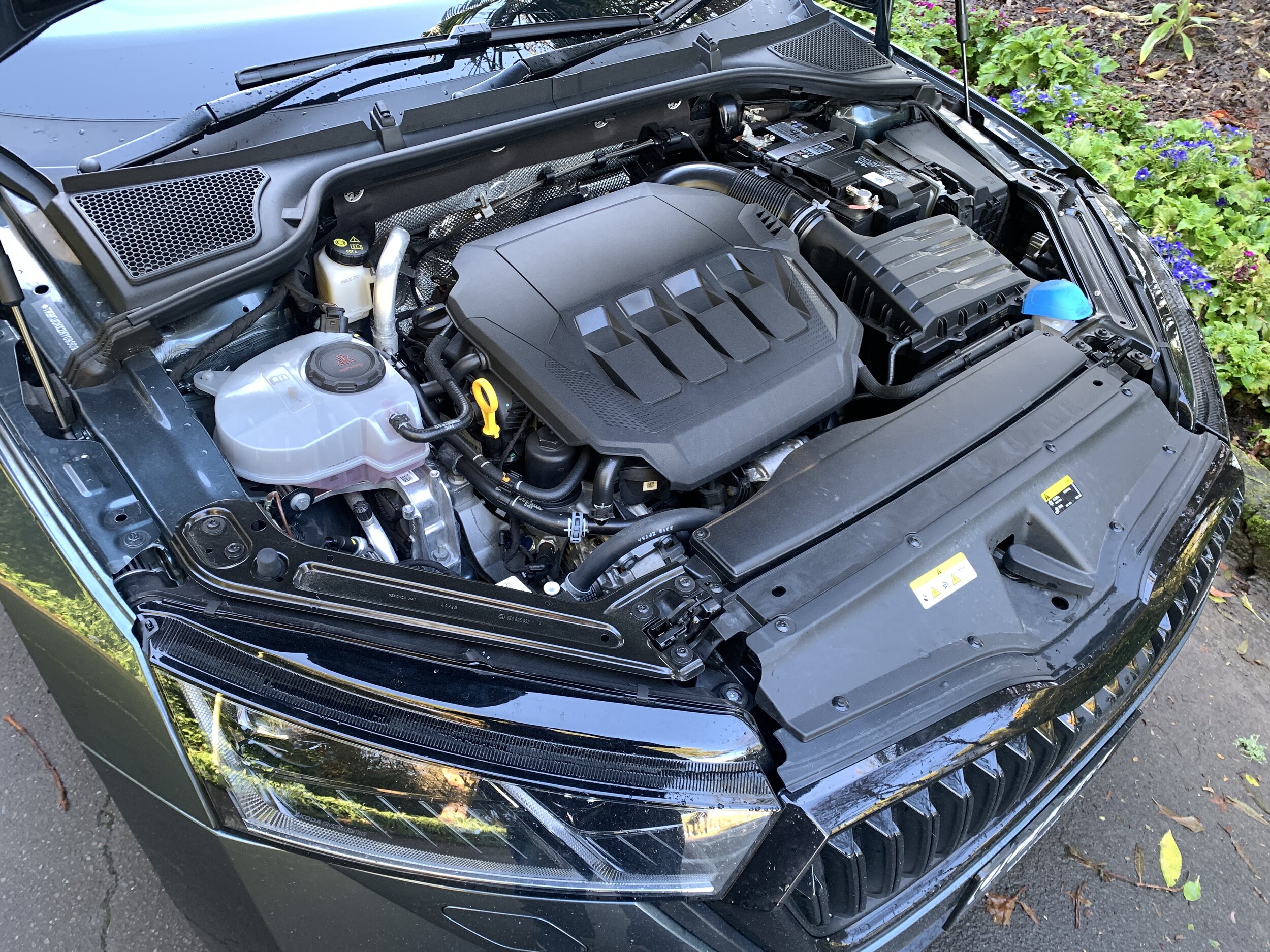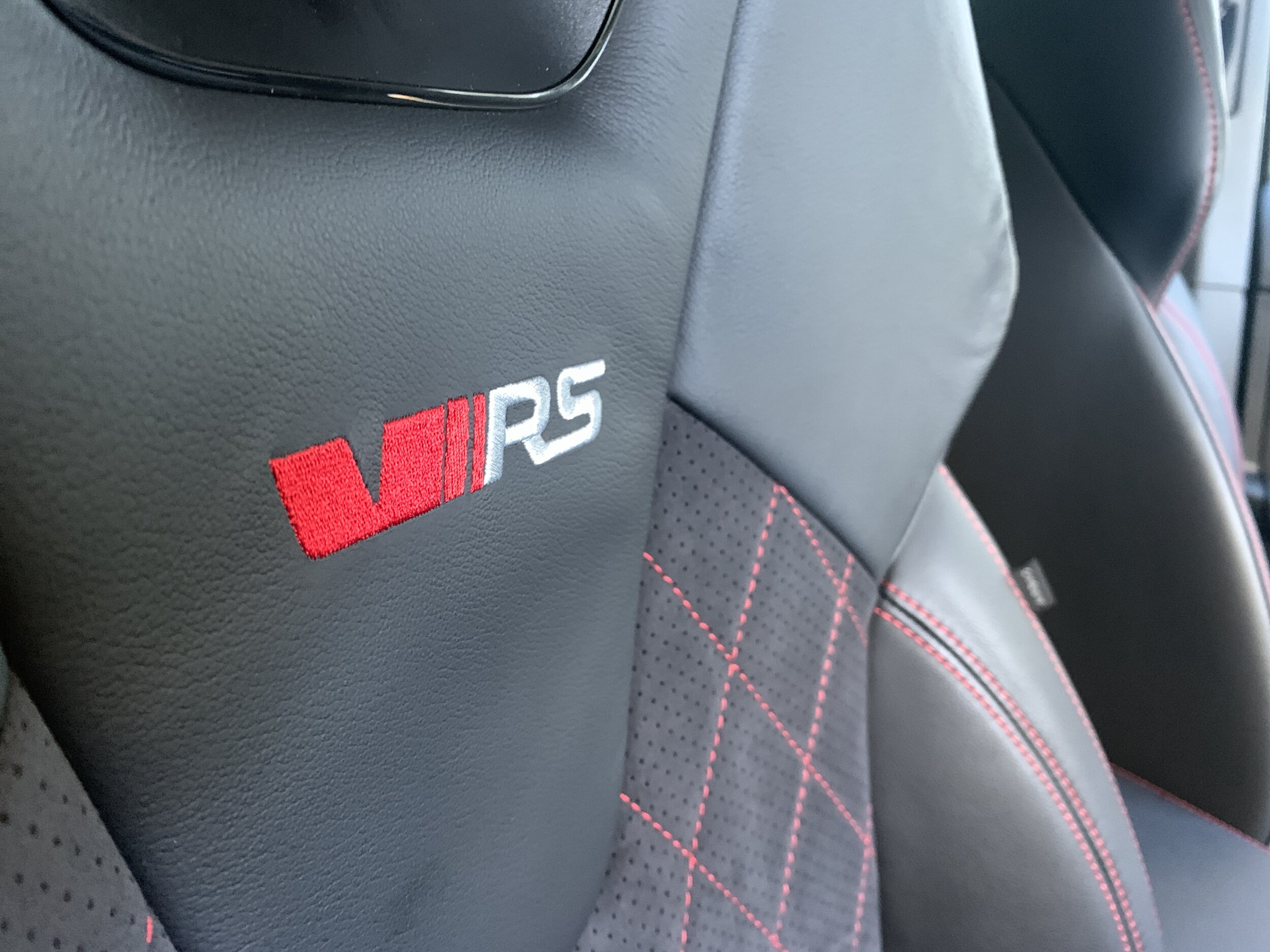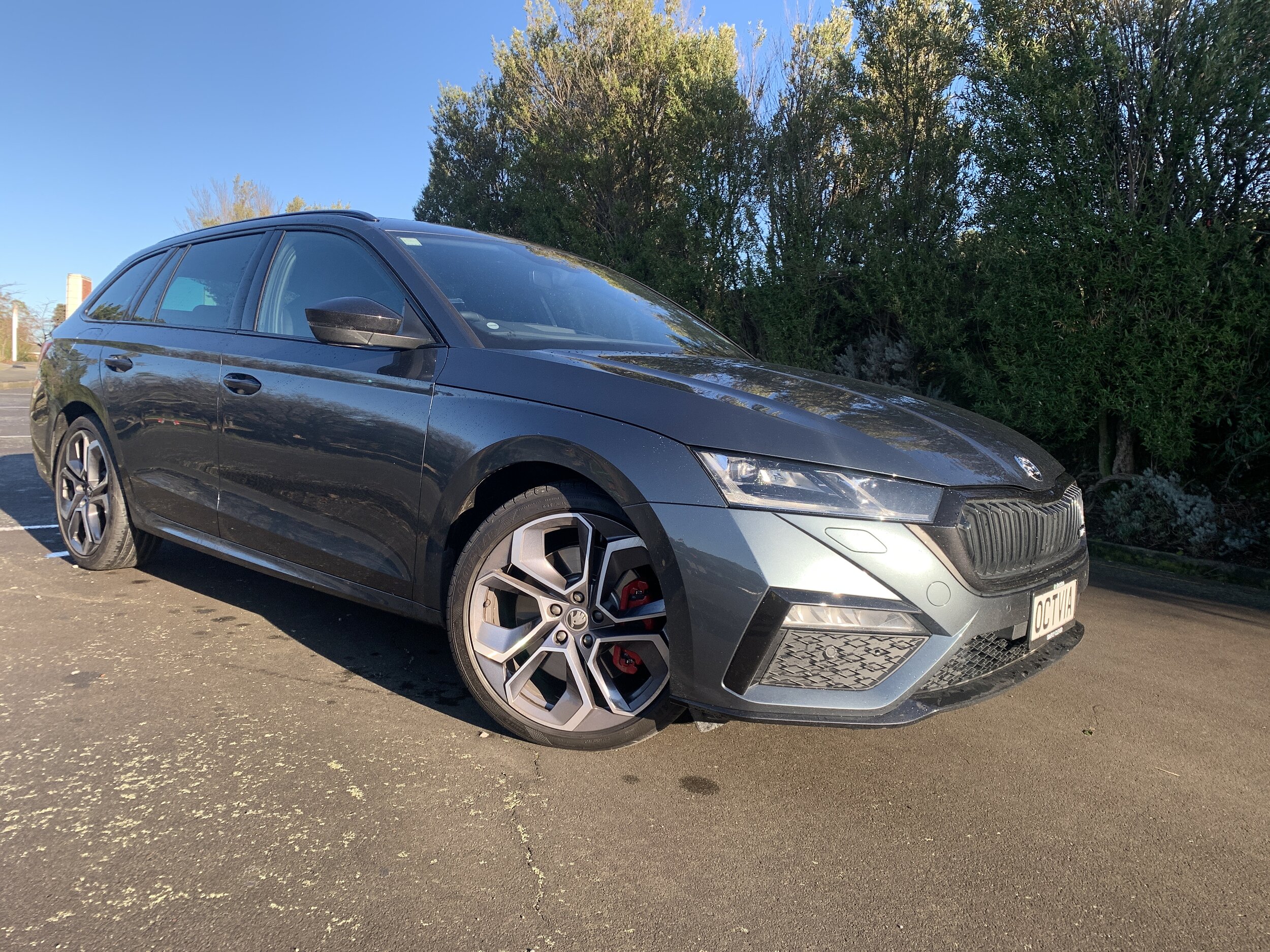Skoda Octavia RS review: Sin of the family
/A wagon with a strong hot hatch flavour … who could possibly be unhappy with that?
Base price: $57,990
Powertrain and economy: 2.0-litre turbo-petrol inline four, 180kW/370Nm, 7-speed dual-clutch automatic, FWD, combined economy 6.8L/100km, CO2 156g/km.
Vital statistics: 4689mm long, 1994mm wide, 1468mm high, 2686mm wheelbase, luggage capacity 640 litres, 18-inch alloy wheels (19s on test car).
We like: Quality, practicality, affordability and puntability; delivers strong emotional; engagement.
We don't like: No torch, 19s should be standard, potentially trades away some GTI dynamic precision.
MANY cars might at the moment be construed to be raising two fingers to the establishment, but surely none do it quite so metaphorically as this one.
Look closely at the badge on the Skoda Octavia RS. What could be construed to be a red background plate to this performance badge of honour is actually the letter ‘V’.
Because? The car as sold here is shared with the United Kingdom. Over there souped-up Skodas are known as vRS editions. Track down the same car elsewhere – even in Ireland - and you’ll see it’s simply an RS.
Skoda will tell you, while trying to keep straight-faced, that vRS is shorthand for ‘Victory Rally Sport’. There’s more to it than this.
Some years ago Ford in the UK took exception to Skoda using the same hallowed initials as its own motorsport-themed RS hotshoes. This although Ford preferred its Sport to be prefixed with ‘Rallye’ rather than ‘Rally’. That could have become a key semantic had this matter been taken to the courtroom. But the Czechs didn’t have desire for a what was plainly going to become a protracted legal stoush. Instead, they altered their badge. ‘Victory’ proclaimed? Well, erm … sort of. It’s really about them quite deliberately giving the Blue Oval the ‘v’ in the alternate sense.
In latest form, this car actually also conceivably gives a two-fingered salute to another it literally owes its life to.
Octavia is very much among the purest of Skodas; this and the Superb nameplates are the brand’s longest-lived.
The whole car was designed and engineered by Skoda and it is put together in a Czech plants (whereas certain others are made by VW). All this means that despite the VW Group umbrella that sits over the brand, the car is built very much ‘in-house’ by automotive standards.
And yet, of course, the RS itself basically only emerged after the affiliates were some time ago allowed to pluck fruit from a specific branch of the family tree; the one bore all the good stuff that went into what is now considered one of the world’s most famous and important hot hatches. Undoubtedly, had it gone without those Golf GTI genetics, any Octavia vRS/RS would not be anything like as special as it is. If, indeed, it even existed.
The cars, of course, have become so close that, despite the Skoda packaging in a way the GTI does not (at least, not here) – purely with a station wagon styling – they each use the latest version of the famous 2.0-litre EA888 turbo four, making identical outputs and married to the same twin clutch seven-speed direct shift transmission, with identical modes and paddles or gear-stump operability. They in each case run in front-wheel drive, are equipped quite similarly and are also priced close enough to be competitive with each one another, with the Skoda naturally enough costing less. But only by $4000.
To some, that makes them close enough to warrant direct comparison; certainly, it was my intent to provide a coherent and accurate tally of strengths and weaknesses, commonalities and differences. While the two cars were not delivered exactly in a common timeframe, the period between the Skoda leaving and the Golf landing was less than a week. Close enough for memory of one to be fresh when trying the other. Game on, then.
And, then … game over. Covid Level Four. Lockdown enforced 24 hours after the GTI arrived. The car has been used for a couple of supermarket runs, but that single duty could not be called a test. Certainly, conscience and commonsense prohibits it being chucked on the route I drove in the Octavia.
But it’s not all been in vain. Having the Golf here, even as a garage queen, has enforced a dis-similarity in personality.
Octavia is a brilliantly feisty package, but only after the Golf arrived did it become apparent just how belligerent it is.
Some context. All sorts of arguments hang over the GTI. Was it really the world’s first hot hatch (some students of the segment will claim the niche was founded earlier by either Simca or Autobianchi)? Was it truly the world’s best (the Peugeot 205 GTi, maybe the Honda Civic Type R, certainly gave it a hurry up)? Does it deserve that mantle now (when the likes, for instance, of the utterly bonkers and yet brilliant Toyota Yaris GR are pacing angrily around)? It’s a vexatious subject.
Putting all that aside, let’s surely agree the Golf GTI is, at least, a landmark. Of all the cars that match a hatchback bodywork with a more powerful engine under the bonnet and uprated sports suspension, the GTI has consistently been among the most magic.
And, yet, as much as the fun formula of delivering a useable everyday car that's just as happy going to the shops as it is shaving apexes on a track day has been religiously adhered to, there’s no doubt that the GTI has been refined over the years. Quite literally. Persona-wise, today’s car is a hugely polished product. Think of it as a street fighter that also happens to be a Rhodes Scholar.
If you think the GTI has become a touch too educated for its own good, then by all means steer toward the Octavia RS. Though a physically larger product, it is nonetheless technically no less as well-schooled as the VW – every safety and driver assist Germany puts into its own car carries into the Skoda – and is it on equal footing for all relevant quality indicators.
Yet there’s still a strong sense that the Czech car is, in sense of outright spirit, more GTI-ish than the GTI.
I cannot say if that sense of it being a touch more belligerent would be confirmed by in a showdown test to judge outright driving demeanour. The Golf is a car whose overall competence should never be under-estimated. It’s also a touch lighter and is smaller and has a different, more advanced, performance differential. All those factors have to lend advantage.
However, I would suggest that this time around the Skoda wastes no time in striving to be the more immediately engaging of the pair.
You get this from just sliding and firing it up. Skoda’s driver’s seat is slightly sportier and, on engagement, the engine delivers a somewhat rortier soundtrack. While the VW gets on a nice ‘grrrr’ on in its highest performance setting, it’s the Skoda that delivers a louder, more feral note and adds in a bigger dollop of snap-crackle on over-run. While I fully accept that some of this audio element is electronic and ultimately involves to the point of being a touch irksome, fact is that it’s all constituent to the experience you expect to get. And, in that respect, the Skoda lays it on a little more thickly.
As said, I have no idea if this ultimately makes this the better driving car. Probably not. The GTI is so well-engineered. But from being driven enthusiastically in isolation, the Skoda impressed as being fabulously heroic.
Aside from all that, I love the practicality of the wagon format, don’t mind the styling and, yes, love a saving, even if it’s just a few grand. So, in respect to the balance of performance, cost and daily usability, it’s a car that I would love to own. And, more importantly, so would my wife. The chances of us ever agreeing on anything to do with cars is so rare it’s worth a mention.
The RS has also historically provisioned as a diesel, but that’s in the past; the next step is a plug-in hybrid drivetrain, the same that’s gone into the larger Superb, I’m cautious about suitability for the RS. Sure, the on-paper wallop looks fantastic, but it’s only entertained while the battery has charge. That’s a very limited period if you’re prone to hard-driving. Once the electric assist exhausts, it’s a small capacity petrol car required to haul additional kilos.
In the here and now, from the first push of the starter button, the EA888 very much imparts as being the right engine for the job; the snarl from the exhaust outlets is just loud enough to let you know it is a sporty car without enraging your neighbours. As said, you can accentuate all this rortiness with the performance settings; because a sound enhancer is involved, often more noise is heard inside the car than outside. This can be circumvented via the Individual mode and by way of the Eco setting – but let’s not kid ourselves about the latter function EVER being employed in a car such as this, regardless that it does allow genuinely decent thrift.
Though it mainly works obediently within urban limits, you really want to find driving environments that allow less restriction; it’s an engine that revs willingly, with a whiff of turbo lag relenting to a nice swell of grunt as it falls into a very fat band of peak torque – from thereon it just has an increasing hunger for pace and revs.
Going into the Sport mode enhances the car’s urgency; too abrupt for low-speed tootling, this setting comes into its own as you start to push the car and climb into the mountains of easily surfed torque.
The seven-speed dual-clutch transmission becomes snappier but without losing slickness and works impressively harmoniously and without hesitation with the engine. There’s no absolute necessity to work the box yourself but you might like to do so if keen to run the engine to the limiter, though by that point you’ll need to check yourself, the Skoda being such a relaxing car to drive quickly means it will easily entertain achieving a turn of pace that is far less agreeable with our legislation than any boundaries set in Europe.
With so much stonk aboard, you’ll be pleased to discover an appealing neatness about the car’s overall demeanour. Adaptive dampers are standard and help to soften the ride at a cruise or firm it up when pressing on, but even in Comfort the suspension is still firm, although not quite as jarring as that of some of its key rivals.
There’ll be argument if it can be considered as truly engaging as some full-out hot hatches; while it has good turn-in and sits nicely flat, the rear of the car is a little inert to be considered sporty. Yet the one big asset here, that is not a given with some others, is that it has a considerable air of imperturbability. That factor in itself means it can be regarded as an efficient choice to cover ground effectively and quickly.
Whereas 18-inch rims are standard, this car was on an optional 19-inch rim and lower profile tyre. The low-speed ride quality was probably more rigid but the rubber choice was good for play; plenty of traction and grip, great feedback through the steering and very decent body and wheel control, even on bumpy roads. The well-modulated brakes are also a strength.
The RS-specific cabin is a significant step up in terms of ambience over the regular Octavia; all done for sports effect, of course. The seats up front have a significant amount of bolstering, plus a part-leather finish that is unique to this model. Though firm, they prove to be decently form-fitting and perfect for keeping your body in place. Skoda also provisions a tactile steering wheel trimmed in leather and a suede-like dashboard insert that, along with the 'carbon/black' trim accents, special floor mats, RS door sill covers, LED ambient lighting and alloy pedals in the driver's footwell all add to the ambience.
The Octavia RS achieves the largest and most upmarket touchscreen infotainment system given to the Octavia, and though it’s actually smaller than the item in the Golf GTI and a little slower to kick into action when the car starts, is still a very good interface, with very decent graphics. Thankfully Skoda has included physical shortcut buttons for accessing its main functions. There's also digital instrumentation with selectable views for the layout of the speedometer and so on.
Between the front seats, ahead of that now nub-like drive selector, there's a wireless phone charger and two USB-C ports; still vertical because that’s a Skoda thing – and an annoyance, as the slightest touch on the cable can disrupt the connection. Nice that the brand provisions a USB to USB-C convertor. Other USB-C slots are in the back and one can be found in the rear-view mirror. Skoda citing it to be designed to be used with ‘dashcams’ is, presumably, just this brand striving to be respectful of the law. There’s much more likelihood of another kind of device plugging in.
There's good legroom in the back, in the outer seats at least. Those are more heavily sculpted too, which means anyone consigned to the centre position will contend with a hump in the sweat base as well as the transmission tunnel (that isn’t) in the middle of the floor.
Practicality is a big Skoda selling point and assuredly even the version that puts pace as a priority doesn’t lose sight of this primary requirement. As result, the boot is not only simply massive, holding 600 litres at a minimum, or up to 1555 litres if you fold the rear seat backs down, but also sensibly-shaped and trimmed. One disappointment is that a convenience of our own Karoq, an interior light that doubles as a pop-out torch, doesn’t figure in the Octavia. You still get the other simply clever enhancements like the ice scraper and umbrella.
I’m not the first to suggest the Octavia RS is the GTI you head into when family duties and load-lugging demand weight heavily in your life. The latest certainly hits its remit as a practical, reasonably affordable and patently quality proposition that adds surprisingly decent playfulness to its talents.
The Skoda side of things surely now requires little persuasion, either; this brand has now cemented as a solid preference for Kiwis.
On that note, though, with the single biggest buy-in now being accounted for by the Police through the Superb’s selection as a front-line patrol car, it might be ironic that some RS owners might feel the biggest challenge to their enjoyment could conceivably come from one of their ‘own’.

